Deadly Nightshade / Spring / Summer / Autumn / Toxic
Deadly Nightshade – As the name suggests it can be deadly poisonous. It’s a member of the same family as Tomatoes, Potatoes and Aubergines and it’s fairly common in the UK.
Common Names
Deadly Nightshade, Belladonna
Botanical Name
Atropa belladonna
Scientific Classification
Kingdom – Plantae
Order – Solanales
Family – Solanaceae
Physical Characteristics for Deadly Nightshade
Leaves
The leaves are pale green, ovate and strong ribbed. Up to 18cm long.
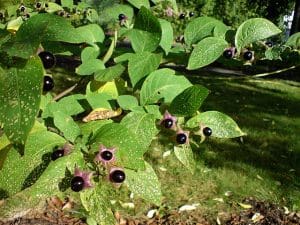
Flowers
The flowers are purple to brown in colour, they are bell shaped with five outward flaring points, and they are slightly scented.
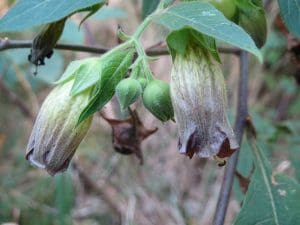
Fruit
The flowers develop into the berries which start off green and then ripen to a shiny black colour. Typically the berries are 1.5cm in diameter. The berries normally appear in autumn and look a little like cherries. They have five large sepals( leafy bits) on the back
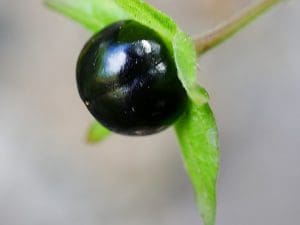
Habitat
It’s more common in the south of the UK and it is typically found on disturbed ground preferring chalky soils.
Known Hazards
It’s one of the most toxic plants found in the UK, all parts of the plant contain tropane alkaloids symptoms of belladonna poisoning include dilated pupils, sensitivity to light, blurred vision, tachycardia, loss of balance, staggering, headache, rash, flushing, severely dry mouth and throat, slurred speech, urinary retention, constipation, confusion, hallucinations, delirium, convulsions and death.
Could be Confused with
They have been confused with Bilberries (Vaccinium myrtillus) in the past, although the berries can look quite similar the two plants look completely different. Bilberries have a ‘bloom’ on their flesh and are smaller, with a clear circle mark on the bottom. They grow on a short bush or shrub which has tiny pink flowers. The Nightshade plant looks like an overgrown potato plant, the berries are shiny and the larger flowers are much darker in colour and have no circle.
Notes on Herbal Uses
It has been used in herbal medicine for centuries as a pain reliever, muscle relaxer, and anti-inflammatory, and to treat menstrual problems, peptic ulcer disease, histaminic reaction, and motion sickness and it possibly useful in treating IBS (irritable bowel syndrome) but I wouldn’t recommend uses it as a home remedy.
Products containing Belladonna are sold in the USA as dietary supplements, cold remedies and even teething powders for toddlers but the FDA (Federal Drug Administration) does not approve it for any medical uses.
Extra notes from the Foragers
The name Belladonna which means ‘beautiful lady’ in Italian refers to its use as a beauty product. Ladies would drop a preparation of the plant into their eyes to cause their pupils to dilate which was considered attractive but prolonged use can cause blindness.
In the past it was thought that witches used Deadly nightshade in flying ointments, it would be mixed with other plants such as Opium poppy, Hemlock and Monkhood and would enable them to fly. In reality they were probably ‘tripping’ so much they thought they were flying!



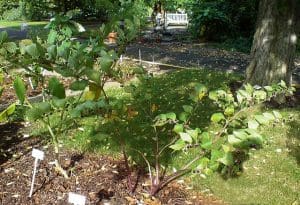
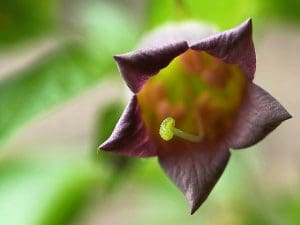

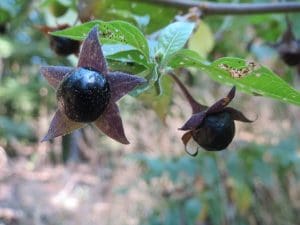



Leave a Reply
You must be logged in to post a comment.